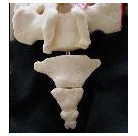People with tailbone pain (coccyx pain) sometimes wonder…
What type of doctor treats tailbone pain?
The answer probably depends on where you are within your spectrum of treatment…
- If you have mild tailbone pain of recent onset, probably your primary physician can handle this adequately by recommending a cushion and pain medications by mouth.
- If your tailbone pain has been present for more than a month, or if you are not getting enough relief from the initial treatment provided by your primary medical doctor, then you should see a doctor who specializes in pain management. Ideally it should be a pain physician who has experience in treating tailbone pain.
- Pain management doctors can provide pain medications given by local injection.
- Pain management physicians are usually subspecialists from the fields of either 1) Physical Medicine and Rehabilitation [PM&R], or 2) Anesthesiology.
- If you have pain throughout the pelvic floor, it may be very helpful to receive an evaluation and treatment from a pelvic floor physical therapist.
- If your pain has been present for more than two month, or if are not getting good relief from your local clinicians, you should consider seeing a doctor who specializes specifically in coccyx pain.
- This way you can get sitting-versus-standing coccyx x-rays and other expert-level evaluations to find the cause of your pain and to provide the best available treatments.
- For patients who have not gotten adequate relief from medications by mouth or medications by local injection, then one consideration is surgical removal of the tailbone (coccygectomy). This is typically done by an orthopedic surgeon or specifically by a spine surgeon. Coccygectomy is necessary in less than 5% of people with tailbone pain.
Regardless of what type of doctor you are considering seeing, perhaps the most important question is whether or not the doctor has substantial experience and expertise in treating tailbone pain.
Here are 3 ways to tell if your doctor is experienced at evaluating and treating tailbone pain:
- Look at the website for the doctor or their medical practice. If the website fails to mention coccyx pain, tailbone pain, or coccydynia, then clearly the doctor does not consider that to be a significant part of their medical practice.
- Call the doctor’s office and ask the receptionist “Does Dr. _____ treat coccydynia?” Coccydynia is the medical term for tailbone pain. If the receptionist sounds confused, or needs you to spell or explain what coccydynia is, then clearly tailbone pain is not a common issue for patients treated in that practice. The receptionist’s job is to answer the phones all day for incoming patients and follow-up patients, and to book their appointments, hundreds of times per month. So if the receptionist has not heard of coccydynia, or has to check with someone else to find out if that practice treats this condition, then you already know the answer that usually they do not.
- Ask the doctor’s receptionist whether their office provides seated coccyx x-rays (x-rays of the coccyx, done while you are sitting, since that is typically the most painful position for most people with tailbone pain). If the receptionist sounds confused, or needs you to explain what seated coccyx x-rays are, then clearly tailbone pain is not a common issue for patients treated in that practice.
- Asks the doctor, “How many patients with tailbone pain have you treated in the past month?” If the doctor is not regularly treating patients with your condition, then he or she will probably be less experienced at providing the optimal testing and treatment for this condition.
Founder and Director at The Tailbone Pain Center
Latest posts by Patrick Foye, M.D. (see all)
- Coccygectomy: Expected Recovery and Return to Work after surgery for coccyx pain, tailbone pain. - November 28, 2023
- PRP Platelet Rich Plasma or Prolotherapy for Tailbone Pain, Coccyx Pain - October 25, 2023
- Reasons for Normal X-rays and MRI Despite Tailbone Pain, Coccyx Pain - October 3, 2023

